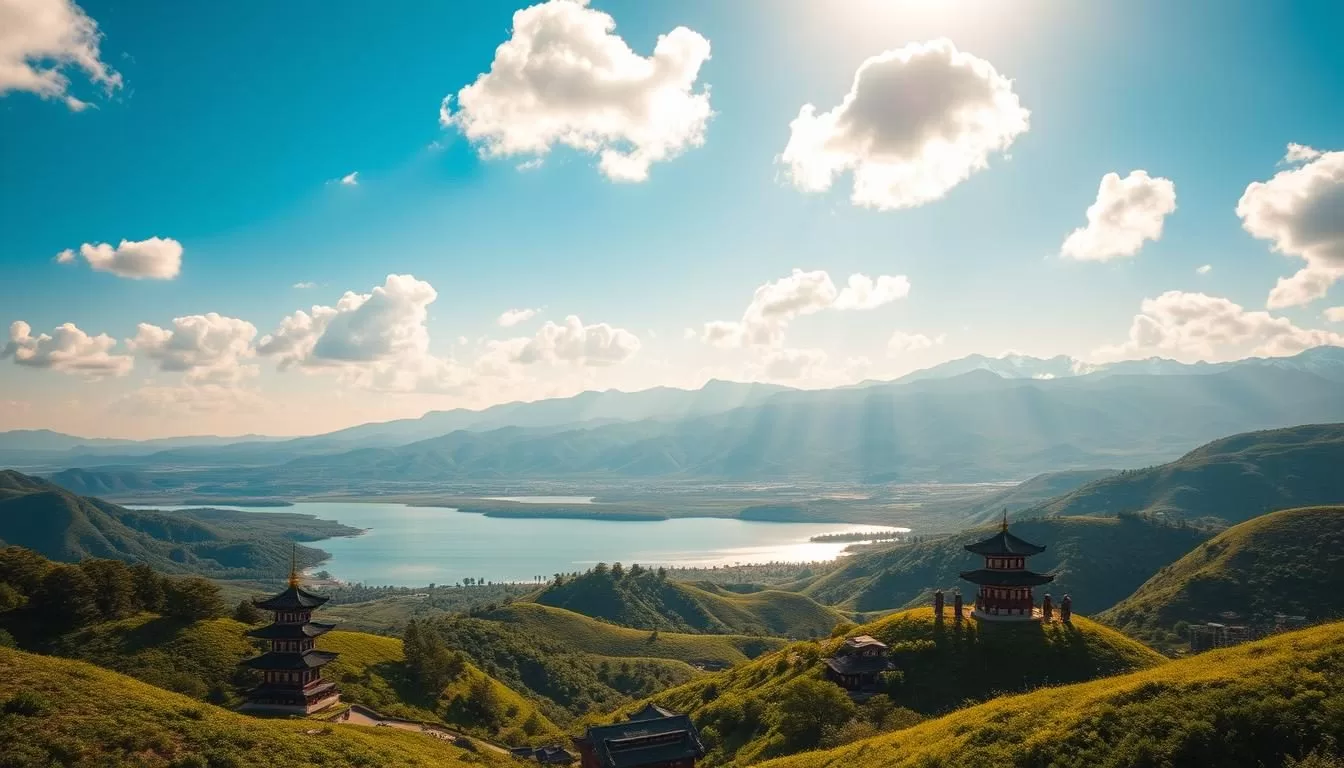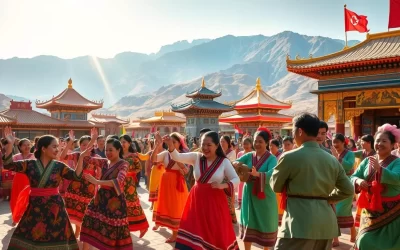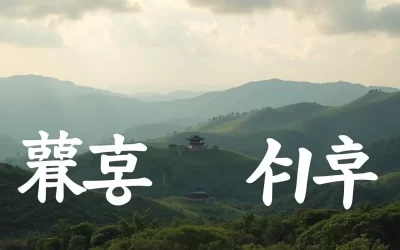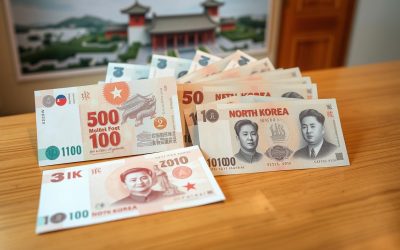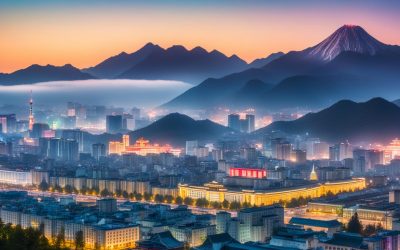Planning a trip to North Korea requires careful consideration of the country’s distinct seasonal variations to maximize your experience in this enigmatic destination.
Understanding the weather patterns throughout the year will help you determine the optimal time to visit based on your specific interests and comfort preferences.
The country experiences four dramatically different seasons, each offering unique perspectives on the landscapes, cultural celebrations, and daily life.
With North Korea now open to tourism year-round, certain seasons provide better access to specific regions and activities.
Understanding North Korea’s Four Distinct Seasons
Understanding the seasonal variations in North Korea is essential for planning a successful trip. The country’s climate is influenced by its geography, with significant variations across different regions.
Climate Overview and Geographic Influences
North Korea’s climate is characterized by four distinct seasons, with cold winters and warm summers. The country’s geography, including its mountains and coastal areas, plays a crucial role in shaping its climate. The weather can be quite harsh, particularly in the northern regions.
| Season | Characteristics | Regional Variations |
|---|---|---|
| Spring | Mild temperatures, blooming flora | Cooler in the north, warmer in the south |
| Summer | Warm to hot, monsoon rains | Higher humidity in coastal areas |
| Autumn | Cooling temperatures, foliage | Cooler in the mountains, mild in the plains |
| Winter | Cold to very cold, snow, and ice | Harshest in the northern mountains |
How Weather Impacts Travel Experience
The weather in North Korea significantly impacts the travel experience. For instance, winter’s heavy snow and ice can make remote areas inaccessible, while summer monsoons can turn rural roads into impassable mud paths. The best time to visit North Korea for comprehensive touring is during the spring (April-June) and autumn (late August-October), when conditions are most favorable.
When planning your trip, consider that weather conditions directly affect which regions you can access and what activities are available. Temperature extremes and weather events can impact your comfort and the itinerary. Local guides often adjust plans based on weather conditions, so flexibility is key.
Spring in North Korea: March to May
With the onset of spring, North Korea awakens from its winter slumber, offering a unique blend of traditional celebrations and breathtaking landscapes. As the weather warms up, the country transforms into a vibrant scene of cultural events and natural beauty.
Weather Patterns and Temperatures
During the spring months, North Korea experiences a gradual warming trend, with temperatures rising steadily from March to May. Daytime temperatures become mild and pleasant, making it an ideal time to explore the country’s outdoor attractions.
Cherry Blossoms and Natural Beauty
Spring is a time when North Korea’s natural beauty is on full display, with cherry blossoms adding a touch of elegance to the landscape. The blossoms create a picturesque backdrop for outdoor activities and sightseeing.

Spring Festivals and Celebrations
Spring in North Korea is marked by significant celebrations, particularly around Kim Il Sung’s birthday on April 15th, known as the “Day of the Sun.” This national holiday brings elaborate festivities, including mass dances, military parades, and fireworks displays. Additionally, May Day on May 1st is another major celebration, where locals enjoy outdoor activities and community gatherings. Visitors can experience the rich cultural heritage of North Korea through these events, which showcase traditional performances, sporting events, and art exhibitions.
The Pyongyang Marathon, typically held in April, is a notable event that allows foreign visitors to participate alongside locals. Moreover, the St. Patrick’s Day tour in March offers a unique cultural fusion experience, with special events organized in Pyongyang.
Summer Adventures: June to August
As summer arrives in North Korea, you’re in for an adventure like no other. The warm weather brings with it a host of exciting events and activities that offer a unique glimpse into the country’s culture and traditions.
Heat, Humidity, and Monsoon Season
Summer in North Korea is characterized by hot and humid weather, with temperatures often soaring during the day. The monsoon season, which typically occurs in July and August, brings significant rainfall, making the landscape lush and green. You should be prepared for the heat and humidity by staying hydrated and dressing appropriately.
Beach Opportunities and Outdoor Activities
Despite the heat, summer is a great time to enjoy North Korea’s beaches and outdoor activities. You can visit the scenic beaches along the east coast, such as those in Wonsan, or participate in outdoor activities like hiking and picnicking in the mountains. The pleasant evenings are perfect for taking leisurely strolls or enjoying outdoor concerts and events.
Summer Holiday Celebrations
Summer is a significant season for celebrations in North Korea, with several important national holidays taking place. You can witness the grand Mass Games, a spectacular display of synchronized gymnastics and dance performed by thousands of participants. Other notable holidays include Victory Day on July 27, commemorating the end of the Korean War, and Liberation Day on August 15, celebrating the country’s liberation from Japanese colonial rule. These events offer a unique insight into North Korean culture and are a highlight of any summer visit. The National Day celebrations are also a significant event, showcasing the country’s pride and patriotism through various performances and parades.
During these holidays, you can expect to see military parades, mass dances, and special performances that are not available during other times of the year. The summer celebrations often extend into the evenings with spectacular fireworks displays, particularly visible from vantage points near the Taedong River in Pyongyang. As a visitor, you may even be invited to participate in certain celebratory activities, providing a truly immersive experience.
Autumn Exploration: September to November
As autumn unfolds in North Korea, the landscape transforms into a kaleidoscope of colors, inviting travelers to explore the country’s hidden gems. The season brings a unique blend of natural beauty, cultural richness, and national celebrations, making it an ideal time to experience the essence of North Korea.
Temperature Ranges and Foliage Changes
During autumn, North Korea experiences a comfortable temperature range, typically between 10°C to 20°C (50°F to 68°F). The foliage changes are particularly striking, with the leaves turning vibrant shades of orange, red, and yellow. This transformation creates a picturesque landscape, especially in the countryside and mountainous regions.
Photography Opportunities
Autumn in North Korea offers numerous photography opportunities, from the stunning landscapes to the vibrant cultural events. The changing foliage, traditional clothing, and festive atmosphere provide a rich tapestry for photographers. You can capture the beauty of the season at various locations, including the countryside, mountains, and urban areas.
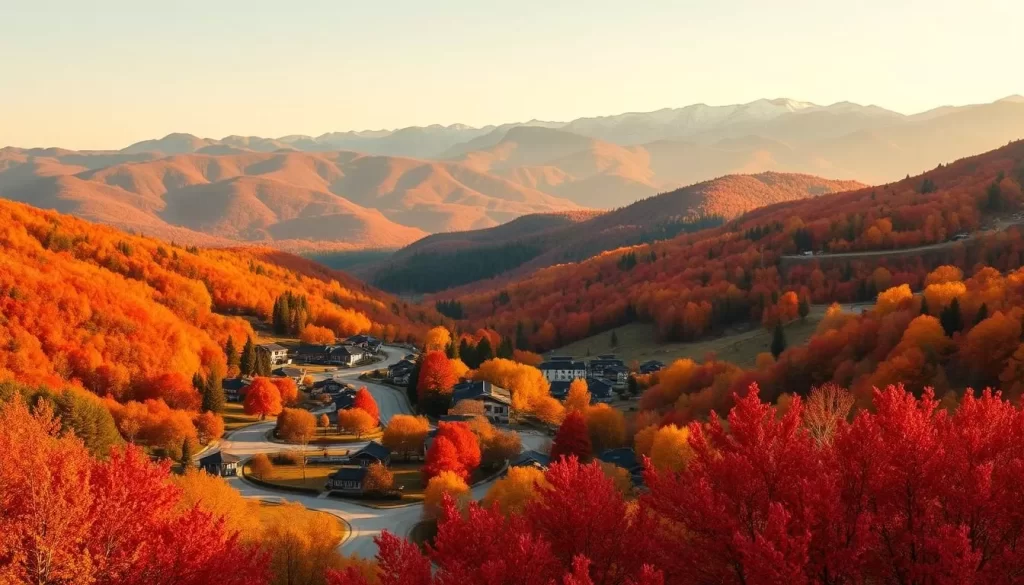
Fall Events and Celebrations
Autumn is a significant season for celebrations in North Korea. The Anniversary of the Foundation of the Workers’ Party on October 10th is a major national holiday, marked by military parades, mass rallies, and special performances. The Mass Games often extend into early autumn, providing a final opportunity to witness this spectacular display. Other notable events include the Pyongyang International Film Festival, held in September in even-numbered years, and the Pyongyang Autumn Marathon.
| Event | Date | Description |
|---|---|---|
| Anniversary of the Foundation of the Workers’ Party | October 10th | National holiday with military parades and mass rallies |
| Mass Games | Late September to early October | Spectacular display of synchronized performances |
| Pyongyang International Film Festival | September (even-numbered years) | Cultural exchange opportunity for filmmakers worldwide |
| Pyongyang Autumn Marathon | Autumn season | Marathon event for participants and spectators |
Additionally, the National Foundation Day on October 3rd commemorates the legendary founding of Korea by Tangun in 2333 BCE, with special exhibitions and performances highlighting Korean history. Harvest festivals in rural areas showcase traditional Korean customs and agricultural practices that have been maintained for generations.
Winter Experience: December to February
Winter in North Korea, spanning from December to February, offers a distinct experience with its cold climate and significant national holidays. You can expect a serene landscape, with snow-covered mountains and frozen rivers, providing a unique backdrop for your visit.
Cold Temperatures and Snow Conditions
The winter season brings cold temperatures, often below freezing, and significant snowfall, particularly in the northern regions. Pyongyang, the capital city, experiences a relatively cold winter, with average temperatures ranging from -10°C to -3°C (14°F to 27°F) during the day. The snow-covered landscapes create a picturesque environment, ideal for winter sports and activities.
Winter Activities and Unique Experiences
Despite the cold, winter offers several unique experiences. You can enjoy ice skating on frozen lakes and rivers, or participate in winter festivals and celebrations that showcase North Korean culture. The frozen terrain also makes it easier to access certain areas, such as the Mount Kumgang, a popular tourist destination.
Holiday Celebrations in the Snow
Winter is a significant time for national holidays in North Korea. On December 24th, the country celebrates the birthday of Kim Jong Suk, a national heroine and the mother of Chairman Kim Jong Il. Additionally, February 16th marks the birthday of Kim Jong Il, one of North Korea’s most important holidays, featuring military parades and cultural performances. You can witness the festive atmosphere, with decorations and special events, despite Christmas not being officially celebrated.
- Experience a unique New Year’s celebration in Pyongyang, with fireworks displays over the frozen Taedong River.
- Enjoy traditional Korean winter foods at local restaurants during the holiday periods.
- Witness ice and snow sculpture competitions in public squares, showcasing local artistic talents.
These celebrations, combined with the snowy landscapes, make for a memorable winter experience in North Korea.
North Korea: Best Months for a Weather-Savvy Trip Based on Your Interests
The best time to visit North Korea depends on what you want to get out of your trip. Whether you’re looking for the best weather, fewer tourists, or specific experiences, timing is crucial.
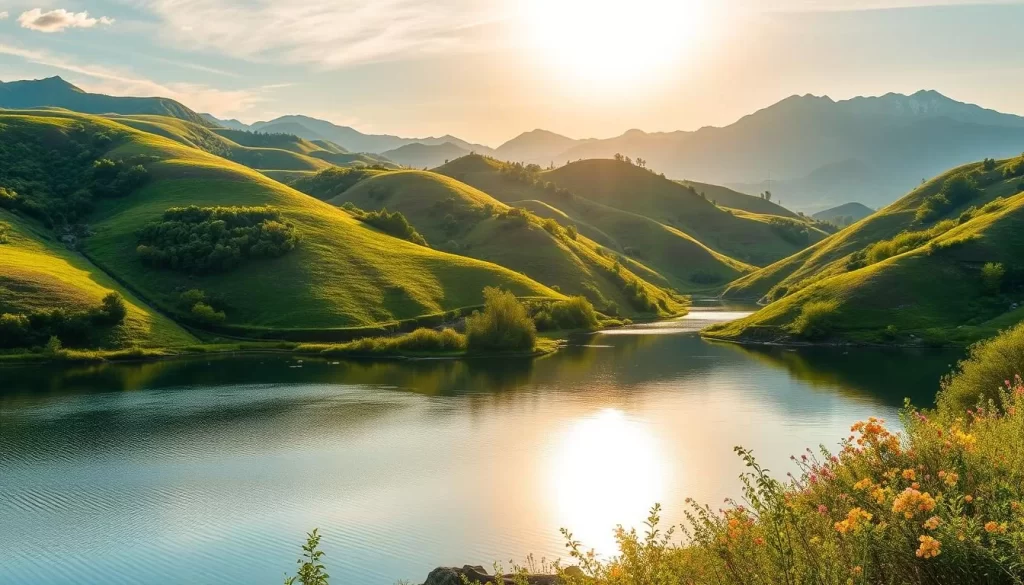
For Photography Enthusiasts
For those with a passion for photography, autumn (September to November) and spring (March to May) are ideal. These seasons offer stunning landscapes, with autumn foliage and spring cherry blossoms providing breathtaking backdrops. The comfortable temperatures during these periods also make it easier to explore outdoor locations without the harsh weather conditions of winter or the heat of summer.
For Cultural Experience Seekers
If immersing yourself in North Korean culture is a priority, consider visiting during cultural festivals and celebrations. Spring and autumn are not only pleasant in terms of weather but also host various cultural events. For instance, the cherry blossom festival in spring is a unique experience, while autumn hosts harvest celebrations that offer insights into traditional practices.
For Outdoor Adventure Lovers
Outdoor enthusiasts will find summer (June to August) appealing, despite the heat and humidity. This season is perfect for beach activities and exploring the countryside. For those who prefer cooler weather, autumn is an excellent choice, with comfortable temperatures ideal for hiking and sightseeing.
For Those Seeking Fewer Tourists
If you prefer a more secluded experience with fewer foreigners around, consider visiting during the winter months (December to February). This period is considered the low season, and you may find that you have the country almost to yourself. The reduced tourist presence allows for more personalized attention from guides and a more relaxed atmosphere throughout your journey.
Visiting North Korea during the right time can significantly enhance your experience. By choosing the appropriate season based on your interests, you can make the most of your trip and create lasting memories.
Regional Weather Variations Across North Korea
You will experience different weather conditions across various parts of North Korea. The country’s diverse geography, from coastal areas to mountainous regions, leads to significant regional variations in climate.
Pyongyang and Western Regions
Pyongyang, the capital city, and the western regions of North Korea generally have a more temperate climate compared to the rest of the country. Winters can be cold, but summers are warm, making these areas relatively accessible throughout the year.
Coastal Areas and Eastern Regions
The coastal areas, including those along the eastern coast, tend to have a more moderate climate due to the influence of the sea. The temperature variations are less extreme compared to the mountainous regions, making them a pleasant place to visit during most seasons.
Northern Mountains and Border Areas
The northern mountainous regions experience the most extreme climate conditions in North Korea. Winters are harsh and Siberian-like, with temperatures often below -20°C (-4°F), while summers are cool and pleasant, ranging between 15-25°C (59-77°F). The dramatic seasonal changes create unique landscapes, from snow-covered winter wonderlands to lush summer greenery.
The varied climate across North Korea means that the best time to visit can vary significantly depending on the region you’re planning to explore.
Major National Holidays and Their Impact on Tourism
As you plan your trip to North Korea, understanding the country’s major national holidays is crucial for a meaningful and enriching experience. These holidays not only reflect the nation’s history and values but also influence the tourism landscape.
Spring Celebrations (April-May)
During the spring, North Koreans celebrate several significant events, though the spring season itself is relatively quiet in terms of major national holidays. However, the pleasant weather makes it an ideal time for outdoor activities and cultural events. You can experience the local culture firsthand by participating in or observing these spring festivities.
Summer and Autumn Events (June-October)
Summer and autumn in North Korea are marked by various events, including the celebration of the founding of the DPRK on September 9th. These periods offer a range of cultural and historical experiences for visitors. You can enjoy the country’s natural beauty during these seasons, with summer offering beach opportunities and autumn presenting stunning foliage.
Winter Commemorations (December-February)
Winter in North Korea is characterized by significant commemorative events, despite the cold weather. December 24th marks the birthday of Kim Jong Suk, mother of Kim Jong Il and wife of Kim Il Sung, alongside the anniversary of Kim Jong Il’s appointment as Supreme Commander. Additionally, February 16th celebrates Kim Jong Il’s birthday, known as the “Day of the Shining Star.” These events feature special exhibitions and performances, offering a unique insight into North Korean culture during the holiday season.
Weather-Appropriate Packing Guide
Packing the right gear is essential for enjoying your trip to North Korea, regardless of the season. The country’s diverse climate means that the right clothing can make a significant difference in your travel experience.
Spring and Autumn Essentials
During spring and autumn, North Korea experiences mild temperatures, making it an ideal time to visit. You should pack layers for your trip, as the temperature can fluctuate. Bring lightweight jackets, comfortable trousers, and sturdy shoes suitable for walking. These seasons are also great for outdoor activities, so consider packing clothing that can keep up with your plans.
Summer Must-Haves
Summer in North Korea can be hot and humid, with occasional rain showers. It’s advisable to pack lightweight and breathable clothing, including shorts, t-shirts, and sandals. Don’t forget to include a hat, sunglasses, and sunscreen for protection against the sun. If you plan on enjoying the beaches or outdoor activities, a swimsuit is a must.
Winter Survival Kit
Winters in North Korea are cold, with temperatures often dropping below -10°C (14°F). To stay warm, it’s crucial to pack a winter survival kit that includes thermal base layers, a heavyweight down jacket or parka, insulated waterproof boots, gloves, woolly hats, and scarves. Even though your hotel room will be warm, common areas like lobbies and restaurants may be chilly, so dressing in layers is key.
When visiting North Korea in the winter, consider bringing hand and foot warmers, as well as a thermos for hot beverages, to enhance your comfort during outdoor activities. With the right gear, you can enjoy the beauty of North Korea’s winter landscapes.
Weather Considerations for Special Attractions
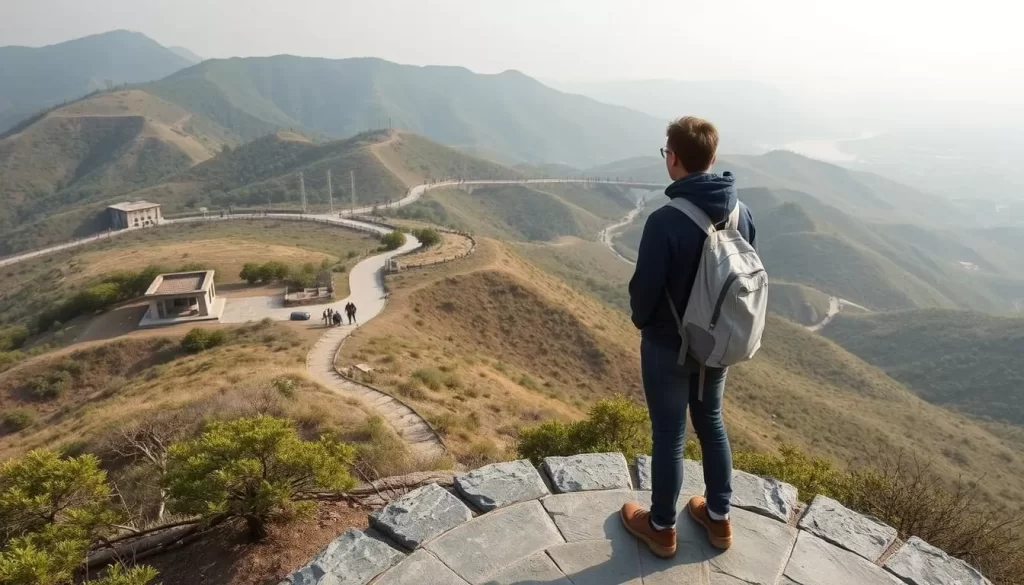
To make the most of your visit to North Korea’s iconic sites, consider the weather conditions. The country’s unique attractions are weather-sensitive, and being prepared can enhance your experience.
Mass Games and Performance Events
Mass Games, a spectacular event showcasing North Korea’s culture and history, are typically held in large outdoor or indoor arenas. While the indoor events are less affected by weather, outdoor performances can be impacted by extreme weather conditions. Visiting during spring or autumn is advisable for comfortable viewing.
Mountain Excursions
North Korea’s mountains offer breathtaking landscapes and hiking opportunities. Weather conditions significantly affect these excursions. Spring and autumn are the best seasons for mountain visits due to mild temperatures and clear skies. Summer can be hot and humid, while winters are cold and potentially hazardous.
DMZ and Border Visits
The Demilitarized Zone (DMZ) between North and South Korea is a unique tourist destination. Weather conditions can affect visibility and the overall experience. Spring and autumn offer the most comfortable conditions with clear skies, providing optimal visibility. Summer visits can be hot and humid, while winters offer a serene, snow-covered landscape.
Transportation and Weather Impacts
Weather conditions play a vital role in determining the accessibility and efficiency of transportation in North Korea. As you plan your trip, it’s essential to understand how different seasons affect various modes of transportation.
Air Travel Considerations
Air travel in North Korea is generally reliable, but weather conditions can cause flight delays or cancellations, especially during severe weather events. You should check the weather forecast before your flight and be prepared for potential disruptions.
Train Travel During Different Seasons
Train travel is a significant mode of transportation in North Korea, but its reliability can be affected by weather. During winter, icy conditions can cause delays, while summer monsoon rains can lead to temporary disruptions. In contrast, spring and autumn offer relatively stable train services.
Road Conditions Throughout the Year
Road conditions in North Korea vary dramatically with the seasons. The table below summarizes the challenges you might face during different times of the year.
| Season | Road Conditions | Impact on Travel |
|---|---|---|
| Winter | Icy roads and snow accumulation | Mountain passes and rural areas may be inaccessible |
| Summer | Mud and washed-out bridges | Last-minute itinerary adjustments may be necessary |
| Spring | Muddy conditions as frozen ground thaws | Secondary roads outside major cities may be affected |
| Autumn | Dry and minimal natural obstacles | Most reliable road conditions throughout the country |

Accommodation Comfort Through the Seasons
As you plan your trip to North Korea, understanding how accommodation comfort changes with the seasons is crucial. The country’s diverse climate and regional differences significantly impact the quality of your stay.
Heating and Cooling Availability
The availability of heating and cooling systems varies greatly across North Korea’s accommodations. In Pyongyang, international-class hotels are equipped with modern climate control systems, ensuring a comfortable stay year-round. However, in provincial cities and rural areas, the availability of such amenities can be limited, especially during extreme weather conditions.
- In Pyongyang, hotels maintain consistent comfort levels.
- Provincial capitals have mid-range hotels with seasonal comfort variations.
- Mountain resorts are designed for their respective climates.
Regional Variations in Accommodation Quality
Accommodation quality in North Korea is not uniform, with significant regional variations. Pyongyang offers the highest standard of accommodations, while provincial capitals like Wonsan and Hamhung have mid-range hotels. In contrast, remote areas and smaller cities typically have basic accommodations with limited climate control, making spring and autumn the most comfortable times to visit.
When traveling on group tours, you are likely to secure the best available accommodations in each region. However, independent travelers may experience more variability in accommodation standards.
Conclusion: Choosing Your Ideal Time to Visit North Korea
When planning to visit North Korea, understanding the country’s seasonal nuances is key to a fulfilling experience. The ideal time to explore this enigmatic nation largely depends on your personal preferences and interests.
Spring (April-June) and autumn (September-October) are considered the best seasons to visit North Korea, offering comfortable temperatures and minimal precipitation, making them ideal for comprehensive group tours within the country. These periods provide a balanced experience with good accessibility to various sites.
If you’re looking for unique experiences, consider aligning your visit North Korea with specific events like the Pyongyang Marathon or the Mass Games. Group tours operate year-round, but the spring and autumn seasons offer more diverse itineraries due to favorable weather conditions. Ultimately, the best time to visit depends on your priorities, whether it’s witnessing major celebrations, enjoying outdoor activities, or experiencing the serene landscapes of North Korea.
Whatever season you choose, North Korea promises a journey of discovery into one of the world’s most intriguing nations.
